What makes one fire starter better than another for survival?
It must be reliable and able to light a fire in bad weather.
It should also be easy to use, even if you have gloves or your hands are trembling from the cold.
Ideally, a survival fire starter will also be reusable or capable of giving thousands of lights, so you don’t have to worry about running out of fuel.
Based on these requirements, here are the best survival fire starters for emergency prep, bug out bags, and bushcraft — as recommended, field-tested, and used by real survivalists
Botton Line Upfront – My Recommendation
Because fire is so important for survival, you don’t want to rely on just one fire starter.
I recommend getting a few reliable lighters to put in your emergency kit and a reusable waterproof fire starter, such as a Ferro rod.
And, to make sure you can start fires in adverse conditions, don’t forget to pack some fire tinder or char cloth in your kit too!
Survival Fire Starters Comparison Table
| Name | Type | Number of Lights* | Ease of Use | Waterproof | Refillable |
|---|---|---|---|---|---|
| Bic Lighter | Sparkwheel lighter | 3,000 | Easy | Somewhat | Yes |
| Uberleben Zunden Ferro Rod | Ferro rod | 12,000-20,000 | Difficult | Yes | No |
| The Friendly Swede | Ferro rod | 10,000 | Difficult | Yes | No |
| UST BlastMatch | Ferro rod | 100 | Moderate | Yes | No |
| Tesla Lighter | Plasma arc lighter | 300 | Very easy | Yes | Yes |
| FancySpark Permanent Match | Permanent match | 50-100 | Easy | Yes | Yes |
| Campfire Piston | Fire piston | Infinite | Difficult | Yes | N/A |
| UCO Stormproof Matches | Matches | 25 | Easy | Yes | Yes |
| Exotac nanoStriker | Ferro rod | 3,000 | Difficult | Yes | Yes |
| Zippo EFK | Sparkwheel | 1,700 | Moderate | Yes | Yes |
| UST StrikeForce | Ferro-magnesium rod | 4,000 | Difficult | Yes | No |
| SE All-Weather | Magnesium block with Ferro rod | 300 | Difficult | Yes | No |
*Before needing a refill or recharge
The Best Survival Fire Starters
1. Bic Lighter
The classic Bic lighters are known as “plastic spark wheel lighters.” When you spin the little wheel, it strikes a flint below and makes a spark. The spark ignites the fuel.
While Bic lighters generally aren’t considered fire starters, they are one of the most reliable and easy ways to make a fire. It is almost foolproof (my daughter learned to use one at 5 years old).
BIC lighters are pretty reliable too. They advertise they can give about 3,000 lights (realistically, it’s more like 1,000 to 2,000). Even though BIC lighters are meant to be disposable, you can refill them.
You can even still use a Bic lighter after it is empty since the spark wheel makes a spark.
And the biggest plus of all?
They are dirt cheap. You can get multi-packs of Bic lighters for very little, which is why they are an excellent barter item to have around for emergencies.
BIC lighters aren’t perfect. They are only somewhat waterproof and don’t work great in windy conditions.
They will also run out of fuel eventually. But they are still the option I recommend most people keep in their emergency kits.
3. Uberleben Zunden Ferro Rod
Ferro rods and strikers are usually the go-to fire starter for survivalists.
Yes, they take some practice to learn how to use, but they can work in all conditions.
If you aren’t familiar with Ferro rods, read this post on how to use a Ferro rod fire starter and this guide to the best ferro rods.
Of all Ferro rods, Uberleben Zunden is by far the best pick. The main reason is that the Ferro rod is much longer than you’d typically find on cheap products.
This is important because you should move the rod, not the striker when using this fire starter. The longer the rod is, the easier the striker will be to use. The rod also comes in 3 different thicknesses, with the thick size being even easier to use.
Another cool thing about the Uberleben is that the striker is a multi-tool. It acts as a tinder scraper, map scale, hex wrench, bottle opener, and striker. The large wooden handle on this Ferro rod also makes it easier to hold, and it comes with a lanyard so you can wear it around your neck.
Yes, the Uberleben Zunden does cost more than a typical Ferro rod, but it’s worth paying for, especially if you are new to Ferro rods.
4. The Friendly Swede Fire Starter
Here’s another traditional-style Ferro rod fire starter, which is great for survival situations.
The Ferro rod’s exposed part is slightly longer than with the Uberleben Zunder fire steel, which makes it easier to use. It’s also nice that the striker has a handle, so it’s easier to grip.
Overall, it’s a great Ferro rod for beginners to learn on and for expert survivalists alike.
I still like the Uberleben Zunder Ferro rod over this one because its striker is a scraper and multi-tool. However, if you have trouble getting a good grip on a striker, then The Friendly Swede Ferro rod is a better choice.
5. UST BlastMatch One-Handed Fire Starter
The UST BlastMatch is essentially a Ferro rod fire starter but made in an excellent way.
The Ferro rod is housed in a sturdy plastic casing. When you push down on the casing, a striker scrapes the Ferro rod and causes sparks to fly.
This design means you can use the BlastMatch with just one hand. It’s also more foolproof than a standard Ferro rod plus striker.
I was slightly skeptical about the plastic casing, but reviewers say it holds up well. The company says that the rod will last for 100 strikes.
Another cool thing about this survival fire starter is that it is lightweight at just 0.8oz. It folds up on itself, so it is just 2.3 inches long. It comes in yellow and black. I’d recommend getting yellow so you can find it easier.
6. Tough Tesla Lighter 2.0
Almost all lighters require some type of fuel, like butane, which might not be available during a survival situation.
For this reason, I like having a plasma lighter in your emergency kit.
These lighters use electricity to create a plasma arc between two electrodes. The arc is incredibly hot and does a great job lighting tinder, even when it’s not completely dry.
Unlike standard flame lighters, plasma lighters won’t blow out in windy conditions. Since they light by pushing a button, they are easy to use even with gloves, arthritis, or hand injuries.
Of all the plasma lighters on the market, the Tough Tesla 2.0 lighter is particularly good for survival. It comes in a waterproof case. Its battery life is better than most, and you’ll get about 300 lights from it.
There’s also a built-in flashlight, whistle, and lanyard, so you won’t lose the lighter.
The caveat for plasma lighters like the Tough Tesla 2.0 for survival is that you need a way to recharge them. So make sure you also have a reliable solar panel or power bank in your kit too.
7. FancySpark Permanent Match
A permanent match is a cross between matches and a lighter.
It will have a chamber that holds fuel. However, instead of using a piezo or spark wheel ignition like standard lighters, it has a spark stick inside.
You remove the spark stick and strike it on an abrasive surface like a match to make a flame.
The benefit to this setup is that you’ll get a larger flame, which holds up better against the wind than matches. You can refill the permanent match and use it again – which is why most brands advertise they can get 15,000+ lights.
In my opinion, Bic lighters tend to be better than permanent matches. However, permanent matches have one big benefit: a built-in gasket means fuel won’t evaporate like most lighters. This makes permanent matches the best survival fire starter for bug out bags or stashes, which (hopefully) won’t get used often.
There are lots of cheap permanent matches available online. This set comes in a pack of 5. It’s also small enough to be part of your EDC essentials kit.
It depends on how long you let the match stay lit, but expect around 50-100 ignitions before refilling. The permanent match itself will last for 15,000+ strikes.
8. Campfire Piston
Fire pistons aren’t as well-known as other survival fire starters, but they are pretty cool: they work by forcing compressed air out of a chamber, causing a spark.
Compared to Ferro rod strikers, fire pistons are harder to use.
They don’t get as hot, usually require a char cloth, and are a bit bulkier. For this reason, a Ferro rod is better than a fire piston for survival.
However, there is one significant benefit of a fire piston: A fire piston is reusable. Even Ferro rods will eventually wear down and need to be replaced. By contrast, a fire piston will work forever if you take good care of it.
Another benefit of a fire piston is that it is easier to use than a Ferro rod if you have arthritis or other hand issues, which would make it difficult to use a striker. I’d still rather have a lighter with a large spin wheel, but a fire piston would be a good backup.
The Campfire fire piston is our top pick because it’s affordable, made in the USA, and small enough for a bug out bag. See our other picks for Best Fire Pistons here.
9. UCO Stormproof Matches
If you prefer to use matches as your survival fire starter, the Stormproof Matches by UCO are the best you can get.
Compared to other matches, the UCO matches burn for much longer – 15 seconds versus about 5 seconds with typical matches. They are coated, so they are completely waterproof.
But these matches are so cool because they are nearly impossible to extinguish in normal circumstances.
You can dunk them in water after lighting them, and they will relight. The same goes for dirt, sand, or other materials: you can completely cover the match and it will re-ignite once uncovered.
As for the UCO matches being windproof, it is pretty amazing. You can hold them directly into the wind (or test this using a strong fan); the match might look like it has gone out but will relight on its own.
The matches come in a waterproof case that floats if it falls in the water. The cool thing about the case being waterproof is that you can also keep some tinder in there.
There are only 25 matches in the case. However, it’s refillable and can hold up to 40 matches. I’d recommend getting a lot of these and keeping them in your Bug Out Bag and your hunker-down kit.
Read more about the best waterproof matches.
10. Exotac nanoStriker XL
Most rod and striker fire starters come with two clunky pieces that are annoying to carry around. By contrast, the Exotac nanoStriker XL fire starter has an ingenious self-contained design that is slightly larger than a Bic lighter.
It is gorgeous, practical, and high-quality.
To use the Exotact nanoStriker, you unscrew the striker from the bottom. Then you unscrew the middle section, where the rod is stored. Flip it around, screw it into the handle, and you are ready to make sparks.
The Exotact nanoStriker XL’s rod is made from a combination of ferrocerium (Ferro) and magnesium.
The Ferro gives durability and produces thousands of sparks when struck. The magnesium means you get hotter and longer-lasting sparks.
You should be able to get 3,000 strikes out of the rod. Replacement rods are available if you manage to wear out the original.
11. Zippo EFK Emergency Fire Kit
Zippo lighters are great for everyday use but aren’t great for survival situations, especially bug out bags because the fuel evaporates so quickly.
However, Zippo has come up with this Emergency Fire Kit, which is perfect for prepping. It requires no fuel and can be used up to 1,700 times.
The fire starter in the kit uses a Zippo flint spark wheel, just without the spark guard you’d typically find on a Zippo lighter. You spin the wheel to produce hot sparks, which can be used to light a fire. For novice survivalists, it’s easier to use than a Ferro rod or other rod-and-striker fire starter.
An excellent design feature is that the spark wheel fits on top of a waterproof plastic case. When you buy it, the kit includes 5 cotton tinder rolls inside. You can put your own tinder inside once these run out. The kit is compact and has a lanyard hole to attach to a pack.
I love that the Zippo fire starter is easy to use (at least easier than a standard Ferro rod) and is one-hand operational.
You can even replace the spark wheel if it wears down. I wouldn’t want it as a primary fire starter, but it’s a great backup if you run out of lighter fluid or matches.
12. UST StrikeForce Fire Starter
Here’s another fire starter by UST. It’s also a Ferro rod fire starter but uses the traditional two-handed striking method.
The rod is relatively short, making it harder to use than the Uberleben Zunden and Friendly Swede Ferro rods. However, the UST StrikeForce has the advantage of a practical design.
I like that the UST Ferro rod comes in a self-contained case. To use, you open it up to reveal the striker and the rod. The case acts as a handle for the striker, making it easier to use with gloves. Another advantage of the case is that it holds tinder and keeps it dry.
No wonder the StrikeForce regularly gets called the best fire starter by expert survivalists.
13. SE All-Weather Emergency Fire Starter and Magnesium Fuel Bar
This fire starter combines the spark-producing capability of a Ferro rod with the heat of magnesium.
First, use the scraper or a knife to shave off some magnesium from the bar. Then strike the Ferro rod, which is built into the side of the bar.
The sparks from the Ferro rod quickly ignite the magnesium. This is an excellent option for survivalists who aren’t great at blowing embers into flames.
The magnesium bar is also handy for fire-starting when you don’t have any other good tinder available; it’s easier to carry around one magnesium bar than a zillion Vaseline-coated cotton balls – though the cotton balls ignite easier.
On the downside, the Ferro rod built into this fire starter is tiny. It doesn’t do a great job of throwing sparks.
Any other Ferro rod fire starters reviewed here will do a much better job; the main reason to choose this one is to have the magnesium for tinder. They don’t list how many lights you’ll get out of this, but I’d estimate about 300.
Types of Survival Fire Starters
Lighters
There are many different types of lighters. These pros and cons are for the ones which use fuel. Even within fuel-based lighters, there are numerous types, and some are better than others for survival.
Pros
Easy to use
Cheap
Reliable
Make strong flame
Many different types
Cons
Run out of fuel
Prone to breaking
Not fully waterproof
Some types subject to fuel evaporation
Plasma Lighters
Plasma lighters are relatively new technology and often get overlooked for survival. They are worth considering, even as your primary firestarter, since they work well in all situations as long as you keep them dry and charged.
Pros
Very easy to use
Push-button operation
Rechargeable
Safe
Windproof
No fuel required
Cons
Not waterproof
Expensive
Need electricity to recharge
Cheap ones prone to breaking
Lose charge in storage
Striking Method (Fire Steels)
This category of survival fire starters includes flint & steel, Ferro rods, and magnesium rods.
Note Ferro rods and magnesium rods are not the same. Ferro is made from various metals, including magnesium. Rods made from just magnesium are softer, wear down faster, and are harder to spark. However, when you do create sparks, they are hotter and longer lasting than those from Ferro. You can also scrape pieces of magnesium off the bar to use as tinder.
Pros
Can be used thousands of times before wearing down
Waterproof
Reliable
Cons
Very high learning curve
Require two hands
Require high-quality tinder
Difficult to use with gloves on
Fire Pistons
These are a little-known type of survival fire starter which rely on compressed air.
Pros
Reusable
Waterproof
Can make your own
Cons
High learning curve
Need some maintenance
Requires high-quality tinder
Won’t work if the rubber gasket is damaged
Matches
Matches were the original survival fire starter once we moved past friction-based techniques. Today, there are some good brands of matches that are especially suited for survival situations. You can also make your own waterproof matches and containers.
Pros
Easy to use
Cheap
Readily available
Cons
Blow out easily
Usually not waterproof
Sandpaper striking surface wears down quickly
Magnifying Glass/Solar Fire Starter
These are also useful to have as a signaling device. Learn about signal mirrors here.
Pros
Use infinite times
Lightweight and compact
Cons
High learning curve
Only works in daylight
Breakable
Friction-Based Methods (Primitive)
There are numerous primitive ways to make a fire without matches or a lighter.
Pros
Can make out of found items
Cons
Very high learning curve
Don’t work well in wet environments
Science Hacks
With a bit of scientific knowledge, there are plenty of ways to make a fire – such as using lemon and a battery to make a flame.
Pros
Can produce large flames
Easy to do
Cons
Must have the items handy
Can be dangerous
Tips for Choosing a Survival Fire Starter
1. Difficulty Level of the Fire Starter
There is nothing wrong with using a Bic lighter for survival. In fact, you should use a lighter as your primary survival fire starter!
When push comes to shove in a survival situation, it won’t matter how cool your gear is or how skilled you are at various fire-starting techniques. What will matter is that you can get a survival fire lit!
Also, remember that you might not be the only one using your fire starter. Unless you want to be stuck with all the fire duties, having an easy-to-use lighter is just smart.
2. How Much Tinder Will You Bring?
Most spark-based fire starters will only work if you have excellent tinder. There’s only so much tinder you can bring with you in your fire kit. Yes, you can find or make tinder, but this takes time.
For this reason, I think BIC lighters are the best survival fire starter; the strong flame means you’ll be able to get a fire going even if you only have sub-par tinder.
3. Consider Cold Weather and Gloves
If you live somewhere cold or use your fire starter in cold weather (which you should plan for since this is a survival fire starter, after all!), it should be glove-friendly. Choose one with a spark wheel that is easy to rotate or nice big handles on the pieces.
Read more cold-weather survival tips here
4. Fuel Type
BIC and other lighters usually aren’t considered “survival” firestarters because they will eventually run out of fuel. In a survival situation, you won’t always have a way to refill them. By contrast, rod-and-striker-based fire starters can deliver thousands of sparks before they wear down.
5. Durability
You can buy a cheap fire starter for just a dollar or two. However, don’t expect it to be the best quality or very durable. It’s worth spending a bit more on a fire starter, which won’t break on you when you need it most.
6. Shelf Life
Want to throw a fire starter in a Bug Out Bag and leave it there? Then you’ll need to consider the shelf life of the fire starter. Yes, fire starters can go bad!
- BIC Lighters: The seal on Bic lighters is pretty good. They should last 3+ years before the fuel evaporates. However, you must keep them out of sunlight as UV light can degrade the plastic.
- Zippo-style lighters: Fuel evaporation is a big problem with Zippo lighters (See here for a list of best survival lighters). Expect the fuel to evaporate in just two weeks.
- Ferro rods: Ferro rods have an indefinite shelf life. However, they might rust a bit in high-humidity areas if they come in contact with salt water or aren’t clean. Many people coat theirs with nail polish to prevent corrosion.
7. Know How to Use It!
When choosing a fire starter for survival, the most important thing isn’t how durable/waterproof/many sparks you get from it; it’s that you know how to use it.
For example, many people pack Ferro rod fire starters into their bug out bags because they are considered one of the best fire starters. But, if you haven’t learned AND practiced using one, it might be useless (you don’t want to learn how to use gear when you are already in a survival situation!).
I’m not saying you shouldn’t get a Ferro rod or any difficult-level fire starter. Instead, keep some easier options in your emergency kit until you’ve gotten some practice and mastered the Ferro rod.

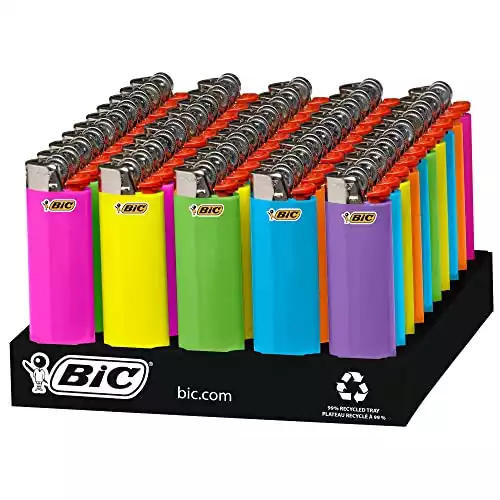
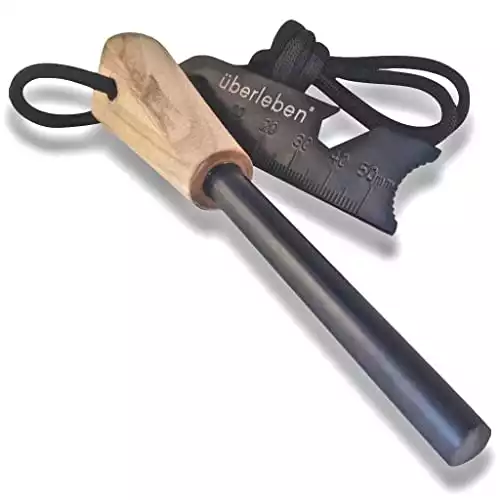
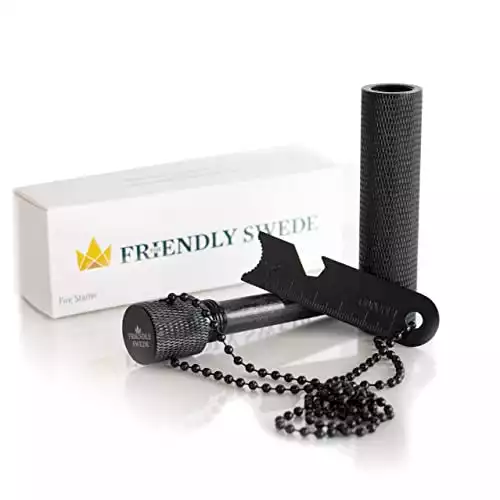
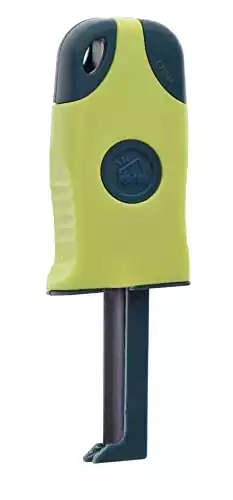
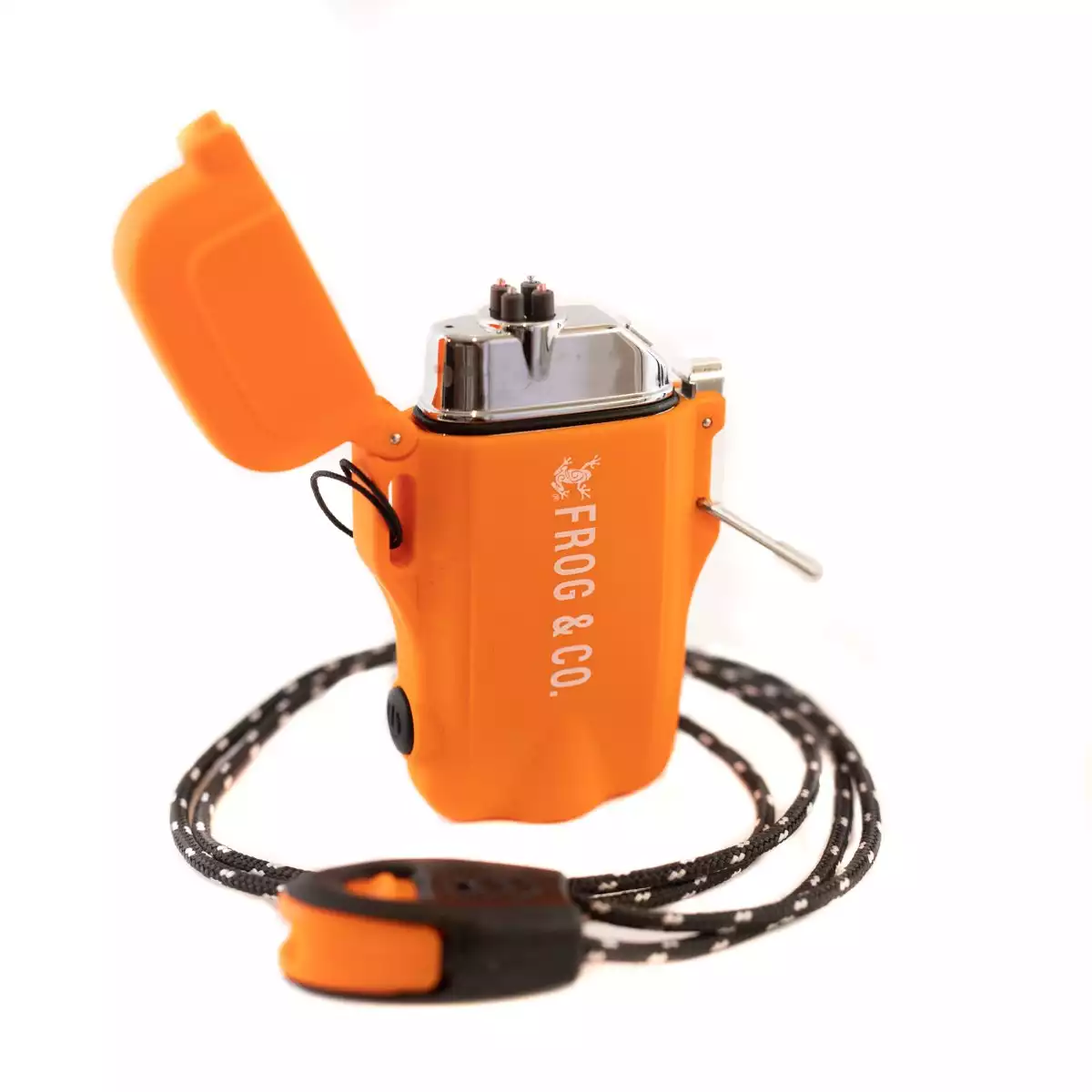
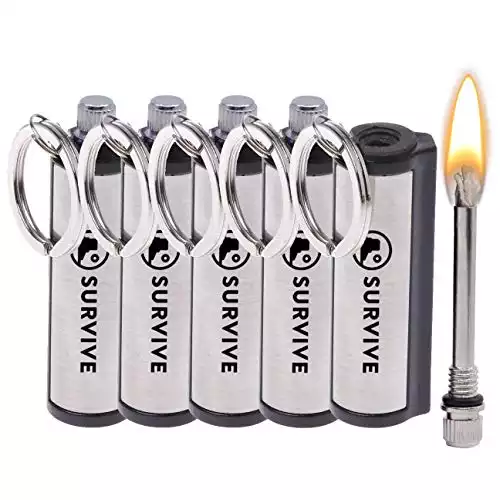
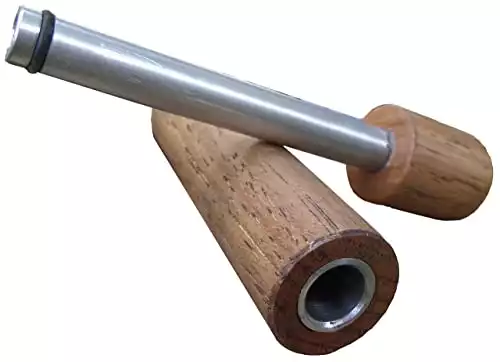
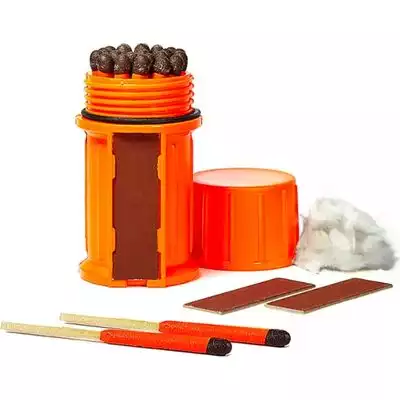
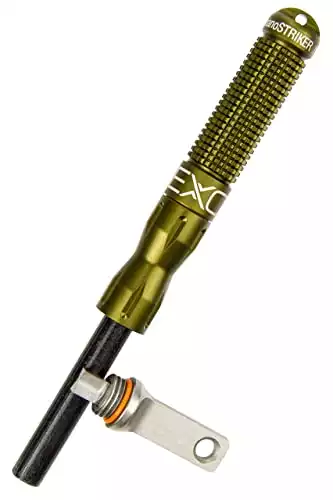
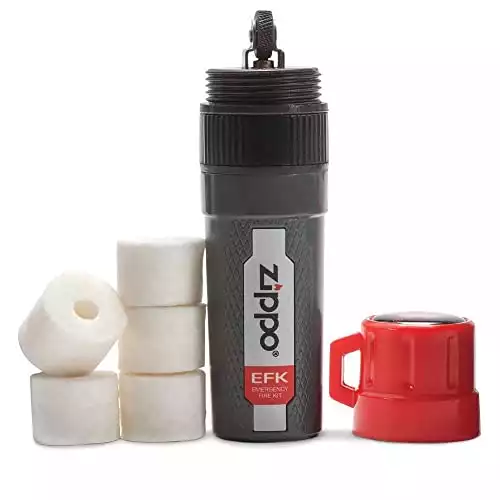
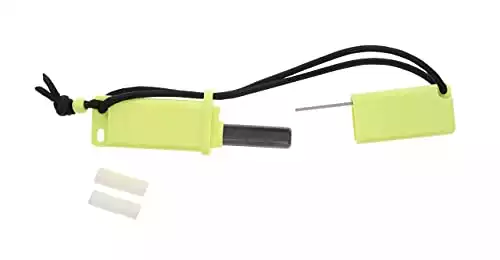
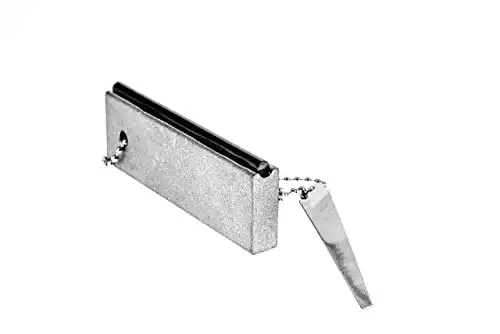


I would have preferred to read about lighters which are refillable – or at least able to be recycled!
I really enjoyed this article. All the listed “lighters” are workable, no question. In addition to which ever igniter one chooses good tender cannot be dismissed. Something to catch the spark or flame and hold it while it is nourished to life is essential: char clothe, a “bird’s nest” or something to hold that all important spark. A simple flint and steel and a proper receptacle to hold the spark while it is nourished to an actual flame can replace all the modern goodies listed IF one is familiar with them and takes the time to become proficient in their use. The simpler, the better. And: no survival gear is adequate or even useful if the user doesn’t know how to use it.
Exactly! Which is why a cheap Bic lighter is still the best survival lighter for most people. I’ve taken to carrying a small container of vaseline in my BOB along with cotton balls for fire starters. The vaseline-coated balls can burn for 5 minutes or so — enough to dry out wet tinder and small kindling.